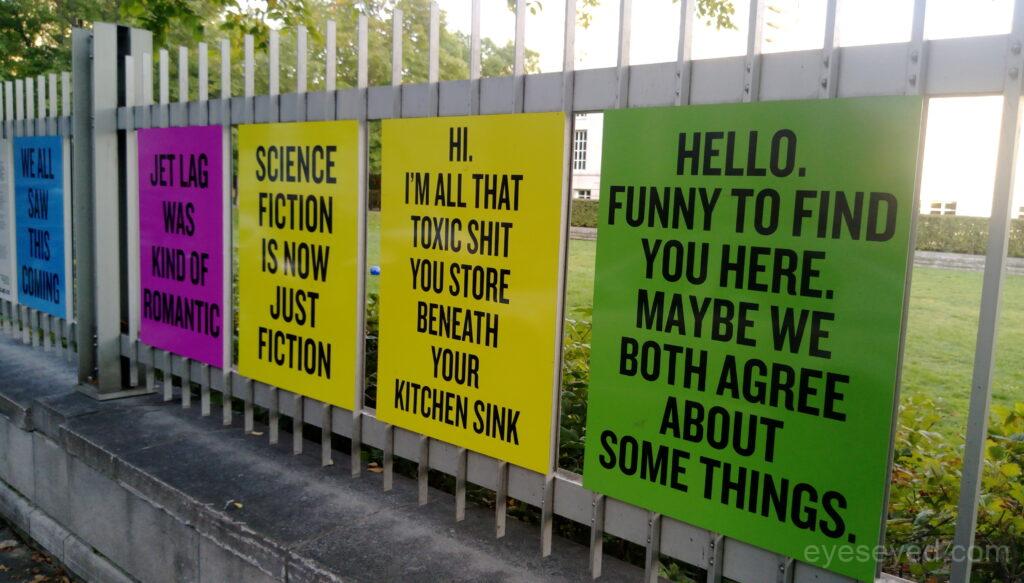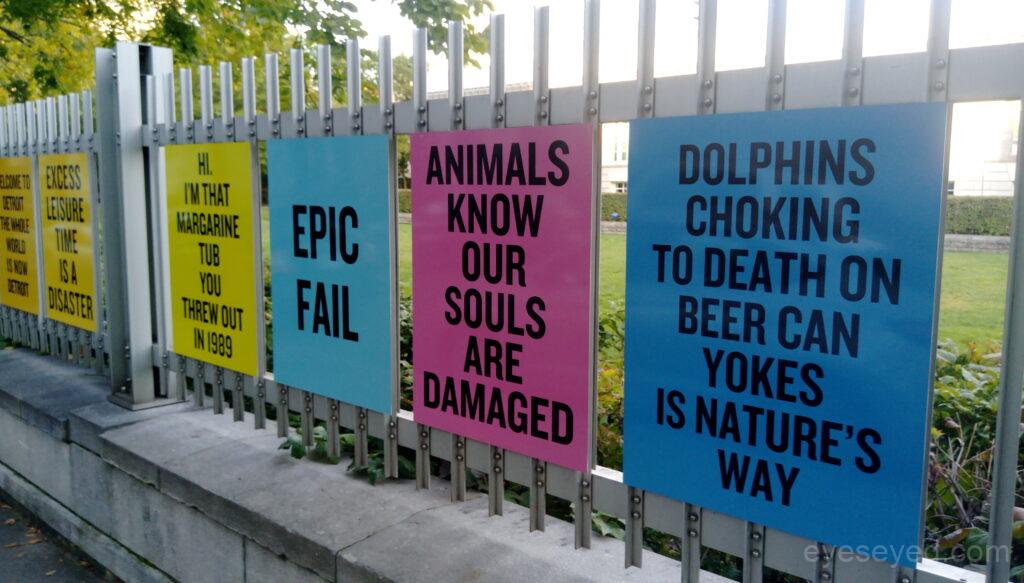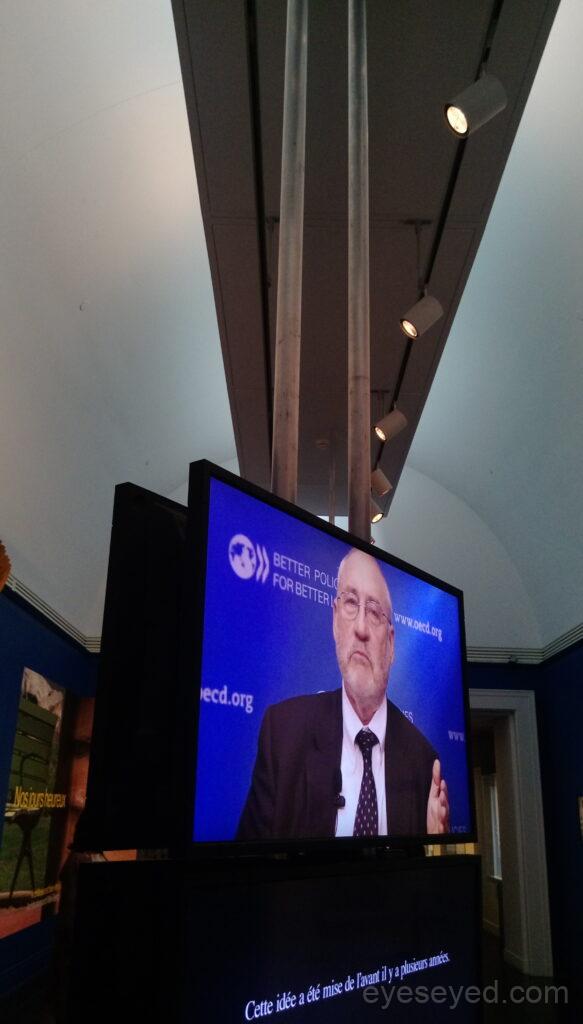
Curated by Francesco Garutti, this exhibition explores and questions the ways science of happiness has started to shape the built environments by turning the politicians, architects and designers’ focus on intangible/subjective elements of well-being. Relying on the abundance of the textual information, this exhibition is heavily didactic rather than entertaining. And the main value of this exhibition resides in its rich intellectual content, which in my opinion outshines the formal display strategies.
The “handbooks of happiness” is the foundation on which the content of this exhibition is structured. Of course I cannot have an expert position in evaluating the inclusiveness and accuracy of this resource which is pulled out from the happy indices, world happiness reports and global liveability reports. But I found the whole effort in contextualizing the role of designers in relation to the “happiness agenda” very relevant. Besides, the whole theme was in perfect alignment with the prime aim of the museum which is to “increase public awareness of the role of architecture in contemporary society and promoting research in the field”1.
A good credit of the experience could be given to the architecture and landscape of the CCA which establishes the very beginning and ending of the journey. In fact the experience starts with encountering the provocative Slogans from Douglas Coupland2 printed on some fifty colored boards along the Parc Baile fence even before you even enter the open yard. They belong to another exhibition of the CCA, It’s All Happening So Fast: A Counter-History of the modern Canadian Environment. However, as they are thematically connected to this exhibition, the visitor get internally prepared for what they are about to face.










The following galleries displayed the 25 case studies each with a unique subject on almost modular tables with the same height. The framed printed paragraphs on the walls were another repeating elements which could have been designed more creatively. But together, the walls were whispering the challenges and questions of the happiness, and the tables were suggesting the potential remedies. The dominant soft blue color of the walls created a healthcare atmosphere, and use of carpet floor except for the last gallery strongly insulated the rooms from the noise and made them visually soft and acoustically calm but a bit dull at the same time. Use of low volume local soundscape near the display tables complementing their contents could have been an effective way to mitigate the visual monotony and converting the galleries into more meditative rather than clinic environments.

Other than the excessive amount of textual information and plenty of modular elements, the absence of any openings to the external landscape was another reason why a break was felt needed. But this did not happen before the last gallery which took a slightly different content and formal design strategy; it concluded the exhibition by displaying three case studies from Copenhagen, Tampa, and Tokyo, which have become popular in branding themselves as the happy cities. Design-wise, the height of the exhibits were lowered from the display tables onto the floor which was no more carpeted. Despite all these strategies, the experience still felt unfinished and open and especially since you were left in the same corridor you started with, a very final space with some similar design elements as the first entrance lobby could have created a complete narrative loop. In the following interview, Garutti calls the provocative ending message of this exhibition: “Are the producers of rankings are the designers of our cities?”. This message could perhaps be isolated in an ending space with similar design strategy of the first entry space. To conclude, I found the method of communication in this exhibition slightly poignant and overwhelming with textual information. It rather left me with an ambivalent feeling, which seemed to be the main objective of the exhibition after all; Garutti declared in an interview that the aim was to leave the visitors with a series of doubts, questions and uncertainties. He also mentions that they plan to respond to these questions in the next year.
